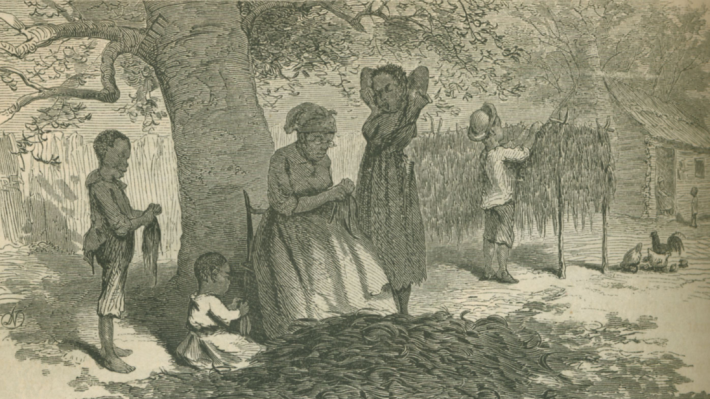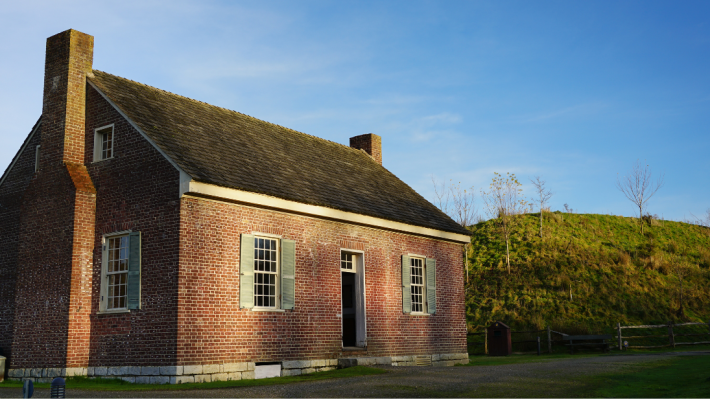
reframing the rogan house
The Tennessee Rogan Plantation House is home to many different stories. Explore how we're developing the narrative.
The Rogan Family
Hugh Rogan was born in 1747 near Strabane, on the border between counties Tyrone and Donegal. He married Nancy Duffy and had a son, Bernard, before emigrating to the United States in 1775. Due to the disruption caused by the War of Independence - and false reports that Nancy had remarried in his absence - it was nearly 20 years until they were reunited. They emigrated to Tennessee around 1796. Their son Francis, born 1798, built the Tennessee Rogan Plantation House that stands in the Ulster American Folk Park today.
Developing the Narrative
The story of Hugh and Nancy, their long separation and unlikely reuniting, is not the only story connected to the Rogan House. Hugh Rogan was given land in Tennessee as part of the colonisation of the Americas, which saw Indigenous Nations living there forcefully relocated or massacred. He purchased enslaved people to work in his house and on his plantation, to engage in the hard labour of growing first cotton, and then tobacco, to bolster his own personal wealth.
Hugh Rogan's will lists six enslaved people that formed part of his personal estate: Dolly, about 34 years old; Dick, about 24; Jenny, about 18; Mariah, about 11; Mary, about seven; and Nelly, three months old, Jenny's daughter.

In the same list, he claims eight horses, seventy-two cows, chairs, tables, and other items. The reduction of individuals to personal property is a harrowing reminder that slavery was a practice that denied the humanity of people who were enslaved. The individuals listed in Hugh Rogan's will have no surnames, their ages only estimations.
Hugh Rogan died in 1813. His youngest son, Francis, took over his plantation. When Nancy Rogan died in 1839, she 'bequeathed' 5 enslaved people to her children and grandchildren, 'and [their] heirs forever': William, about six years old; Matild, about seven; Milly Ann, about three; Jesse; and Mary.

At the time of the American Civil War in 1861, 71 people were enslaved by the Rogan family.
Reframing the Rogan House
Under the guidance and advice of an enslavement consultation group, consisting of representatives from museums and community groups, Liam Corry, Curator of Emigration, has carried out a series of interventions at the Ulster American Folk Park that explore the stories of everyone who lived at the Rogan Plantation.
These include cabin outlines representing the living quarters of those who were enslaved - simple wooden huts set apart from the brick house - and a small kitchen garden, also known as a provision ground, that some enslaved people were allowed to keep to bolster their meagre rations. Some tobacco has also been planted, to illustrate that the Rogan House once had a tobacco plantation.
Dive Deeper
Developing the narrative
The Ulster American Folk Park strives to give a diverse range of perspectives on the story of migration from Ulster to North America, from the 18th century to the early 20th century.
An Ulster Emigrant and Enslavement
During Black History Month we are recognising and highlighting some of the experiences of people who were enslaved.
International Day for the Remembrance of the Slave Trade
We'll be telling the story of how Ulster and the slave trade were connected from the people at home to the emigrants in North America


